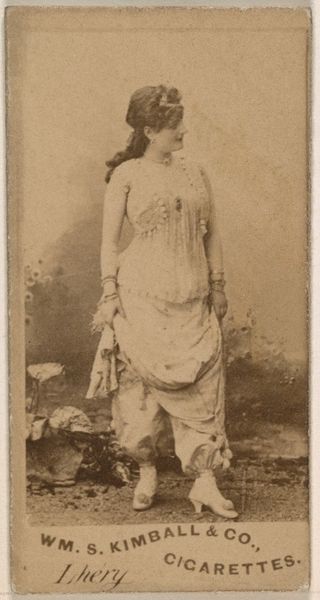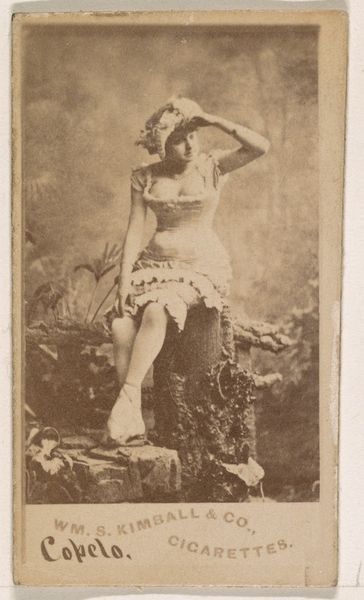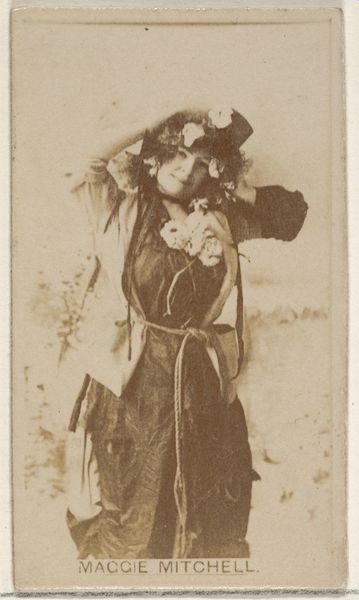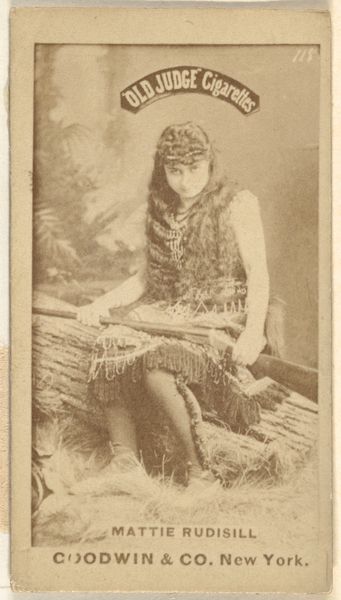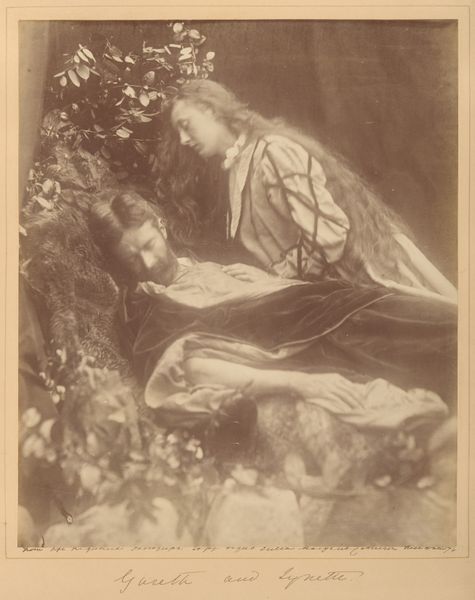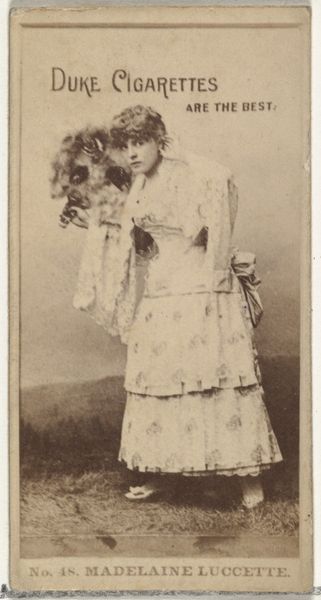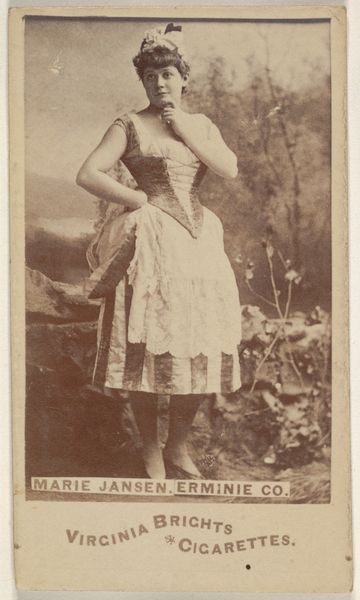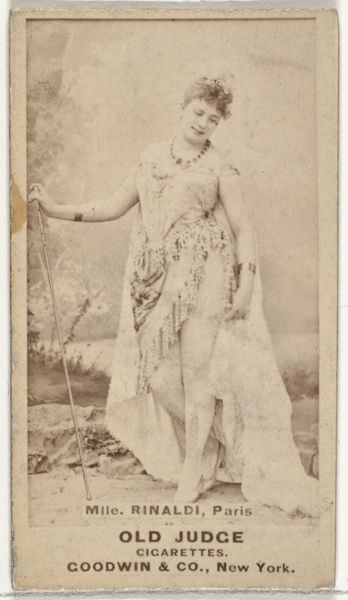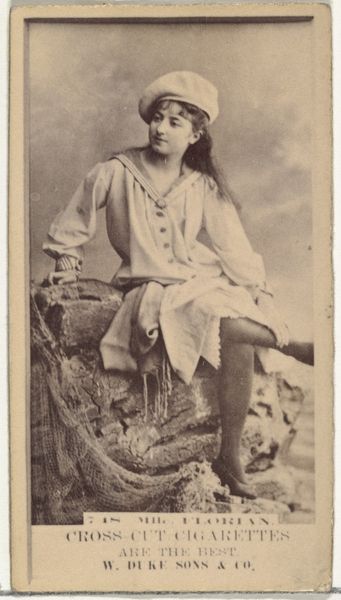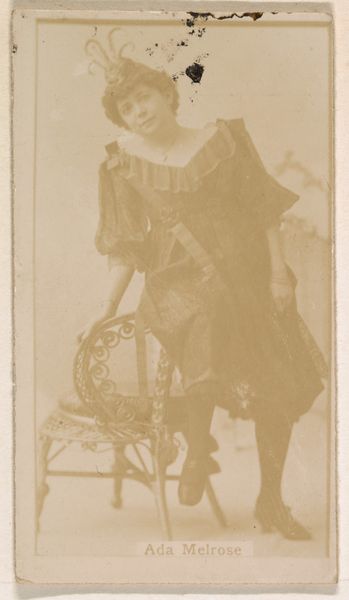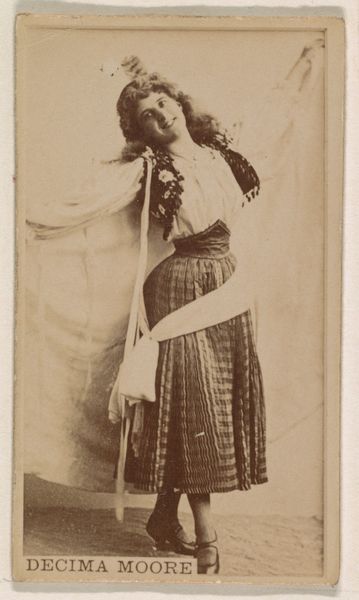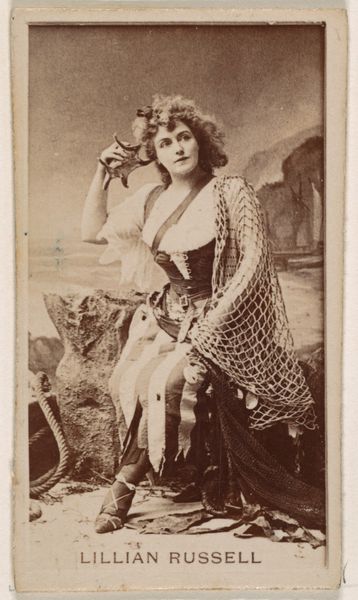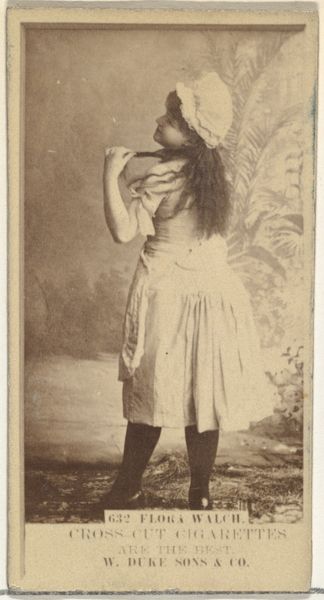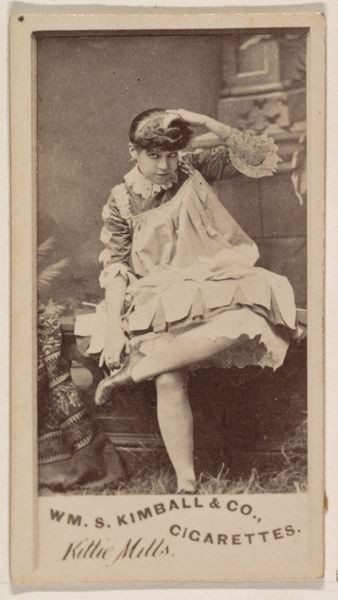
photography, albumen-print
#
portrait
#
still-life-photography
#
charcoal drawing
#
photography
#
orientalism
#
history-painting
#
albumen-print
Dimensions: height 271 mm, width 207 mm
Copyright: Rijks Museum: Open Domain
Curator: Immediately, I see a sense of staged exoticism and performative othering that deeply troubles me. Editor: Indeed, this albumen print, titled "Portret van een Egyptische boerenvrouw met kruik" by Hippolyte Arnoux, made circa 1870-1891, certainly brings up layers of context we must consider. The studio setting feels artificial, doesn’t it? The painted backdrop suggests a constructed, rather than authentic, Egypt. Curator: The woman's pose, her gaze—there’s something unsettling in its composition. I question what the image conveys about cultural dynamics between the colonizer and colonized. Does the photographer explore, exploit, or erase identity? Editor: Arnoux, active during a time of intense colonial interest in Egypt, participated in and reproduced popular imaginaries of the region. Notice how the classical water jug resting on her head reinforces the archetypal 'exotic' and ancient East, and this construction of the 'Orient' says more about Europe than about Egypt. Curator: It’s as if the symbols flatten her experience, distilling it to these visual signifiers. A romantic gesture is layered with an extractive gaze. The eyes see one thing, but the intention might mask an entirely other thing. How much agency did this woman even have? Editor: It is nearly impossible to recover the sitter’s own narrative or motivations at this point, but consider how it would circulate—within albums intended for consumption back home—solidifying biased views about Egyptian life. We might recognize that the image speaks not of facts, but rather values, judgements, fantasies. Curator: Precisely! The water jug, palm fronds, and jewelry act as a kind of symbolic language perpetuating orientalist tropes. They appear decorative here but reinforce a narrative loaded with Western expectations about the 'Orient'. Editor: Photography, as a seemingly objective medium, became a powerful tool for disseminating a specific colonial ideology. It presents us with an artistic image entangled with larger societal structures of domination, its legacy continuing into how we view art and power dynamics today. Curator: Exactly—visual artifacts leave enduring traces in the cultural imagination, becoming embedded within systems that must be unpacked to begin to understand their legacy. Editor: It compels us to challenge these ingrained perceptions of beauty and culture and remember how photographs and similar artworks impacted collective consciousness and continue to echo.
Comments
No comments
Be the first to comment and join the conversation on the ultimate creative platform.
